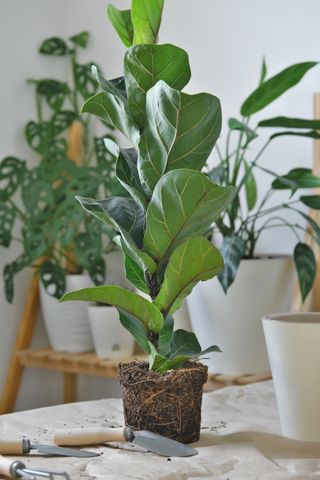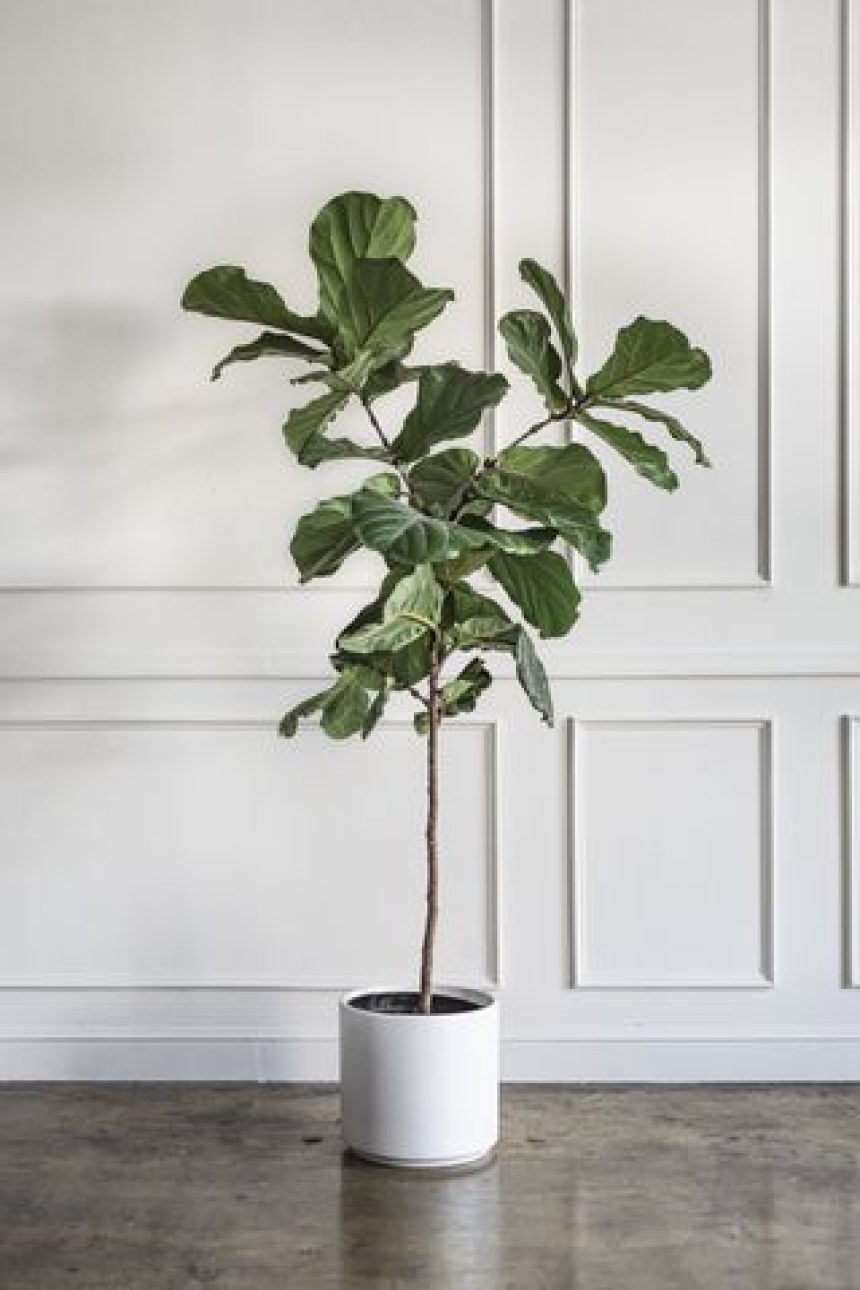Fiddle leaf figs happen to be one of the most chic houseplants around. Now, if you’re keen on experimenting with propagation and extending your collection, we’ve got your back.
To save you from making any rookie mistakes along the way, we’ve put together a step-by-step guide that will aid you through every part of the propagation journey with these popular houseplants.
So whether your medium of choice is water or soil, we’ve got all the trusty information you need to successfully sprout some fiddle leaf fig saplings from your existing houseplant. Starting with how to take the perfect cutting — after all, a good foundation is the mark of a triumphant planting.
How to Take Fiddle Leaf Fig Cuttings
(Image credit: Getty Images)
Fiddle leaf fig mistakes are commonly made during the early stages of propagation. To err on the side of caution, gardening expert Tony O’Neill has shared his expert insight on how to start off strong with the perfect cutting.
Here are his two cents on what you need and how to go about properly taking a cutting from a fiddle leaf fig.
TOOLS
. Sharp, clean pruning shears — this pair of gonicc 8″ Professional Premium Titanium Bypass Pruning Shears from Amazon is a best-selling buy.
. A healthy fiddle leaf fig — in case you’re looking to add a pre-grown houseplant to your collection, this Fiddle Leaf Fig Tree from The Sill is a brilliant option.
. Rooting hormone, like this Garden Safe Take Root Rooting Hormone from Walmart.
. A container, like this Round Base Geo Terracotta Planter from Terrain.
. Water or potting soil — and if you pick the latter, you can’t go wrong with this Indoor Professional Fiddle Leaf Fig Potting Mix from Walmart.
METHOD
Step 1 — Select: Tony tells us that the first step to taking a flawless cutting is to choose a healthy branch with at least two leaves.
Step 2 — Cut: “Next, cut just above a leaf node, ensuring the cutting is about four to six inches long at the very least,” he says.
Step 3 — Shed: Then, he tells us to remove the lower leaves, leaving only the top few on the fresh cutting.
Step 4 — Feed: “Lastly, dip the cut end into the rooting hormone to encourage root growth,” he concludes.

I’m Tony O’Neill, a gardening expert and best-selling author. I am an educator with a thriving YouTube channel that has 438,000 subscribers and receives over 1.4 million monthly views. Through my award-winning website, simplifygardening.com, I share my passion for gardening and sustainability. I’ve authored books including “Simplify Vegetable Gardening,” “Composting Masterclass,” and “Your First Vegetable Garden,” empowering individuals to cultivate their own green spaces.
How to Propagate Fiddle Leaf Fig in Water

(Image credit: Getty Images)
Although deemed high-maintenance houseplants, fiddle leaf figs are well worth the upkeep. Which is precisely why propagating them is a common habit among seasoned houseplant gardeners.
Now, when it comes to propagating them in water, Tony tells us that this three-step method is his tried and true technique for creating a new fiddle leaf fig.
Step 1 — Submerge: “Firstly, place the prepared cutting in a container filled with water,” he explains. “At this point, it’s important to ensure that no leaves are submerged.”
Step 2 — Refresh: Next, he recommends changing the water every few days to prevent bacterial growth and keep the medium healthy.
Step 3 — Transplant: “New roots should begin to appear in two to four weeks,” he notes. “And once the roots are a few inches long, you can transplant them into potting soil for further growth.”
How to Propagate Fiddle Leaf Fig in Soil

(Image credit: Getty Images)
Now, if you prefer going old school and propagating your fiddle leaf fig in soil, worry not! Here is Tony’s walkthrough on how to ace multiplying your houseplant in soil.
Step 1 — Plant: “After applying the rooting hormone, plant the cutting in a pot filled with a well-draining potting mix,” he says. This Miracle-Gro Potting Mix from Walmart is another best-seller we back.
Step 2 — Hydrate: “Next, water the soil lightly to keep it consistently moist,” he guides. “However, beware of overwatering so the soil does not become soggy.”
Step 3 — Position: Tony recommends placing the pot in indirect light and keeping the environment warm to properly meet the needs of your rooted cutting.
Step 4 — Sprout: “When sowing in soil, you’ll find that roots and new growth should appear in about four to six weeks,” he says. So all that’s left to do until then is be patient and attentive with your cutting.
FAQs
Is it Better to Propagate Fiddle Leaf Figs in Water or Soil?
According to Tony, both methods — be it soil or water — can be effective. “Water propagation allows you to see root development, which can be encouraging and ensures you transplant only well-rooted cuttings,” he explains. “While soil propagation can be quicker for root establishment directly in the final growing medium.”
How Long Does it Take to Propagate a Fiddle Leaf Fig in Water?
When it comes to propagating any houseplant, patience is key. However, fiddle leaf figs happen to be quite the quick growers when propagated.
“Typically, it takes about two to four weeks to see initial roots forming,” says Tony. “And if you’re looking for a robust root system ready for potting, it may take an additional few weeks.”
While they may not be the easiest houseplants to propagate, they’re still worth the trouble of multiplying. With their waxy, wavy leaves and affinity to grow tall, if well cared for, these houseplants will quickly grow to become the star of your collection.
Just remember to repot them as they outgrow their planters and make sure they receive optimal sunlight and water so they can flourish into the beautiful houseplants they’re known to be.






